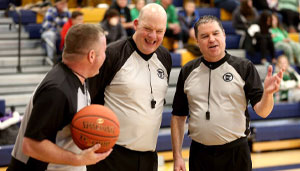For many athletic directors, adding new sport offerings to a student body can be challenging. Financial support, physical space, and gathering the interest of student athletes are all variables that must be considered; however, there may be one sport that can address all of these concerns. Adding a Unified bowling program can create a more inclusive school environment, better community relations, and have minimal impact on school finances.
In different sections of the United States, competitive high school bowling has increased interest in the sport. Student-athletes get introduced to a physical activity that they can participate in long after their high school careers have ended. It can also be a springboard to bring Special Olympics Unified Sports to schools. In brief, Unified Sports creates opportunities for students with intellectual disabilities to participate on school teams with mainstreamed student-athletes. As bowling is scored with handicaps, each student score, regardless of ability level, is meaningfully contributed to team outcomes against other schools. Unified teammates develop friendships and loyalty bonds as they would on any other team and stereotypes of disabled students shatter in the face of these relationships.
Bowling can also be an easy access sport as bowling alleys have the materials on site for athletes and coaches to use. Almost all bowling alleys have balls and shoes on site as well as digital scoring. Digital scoring becomes an important part of the process as bowling utilizes handicaps and can easily be set up before matches. In addition, in certain conditions bowlers with extreme hardship may employ bumpers to increase the success rates of participants.
What makes bowling attractive to athletic directors is that it does not take up valuable athletic practice space on school campuses. For many local bowling alleys, they want the additional traffic of future customers and have a ready audience in high school youth. In this way, having a Unified bowling program creates better community relations as the bowling alley creates a direct link with the high school. Furthermore, if Unified bowling becomes the first offering of Unified Sports on a campus, coaches and athletic directors can utilize the local media to publicize many the benefits of the program: the school can publicize the start of Unified Sports and the rest of the athletic program, the local bowling alley gets media recognition. As a final consideration with proper negotiations, schools may be able to offset potential bowling lane rental costs for practices and competitions with on campus advertising opportunities in the form of banners, PA announcements, and even yearbook advertising.
Unified Sports are growing throughout the country. Unified bowling can be a low-risk first step for many schools that can bring excitement and camaraderie to a new generation of high school athletes who are willing to live the lessons of character we aspire to teach and break down existing stereotypes of isolation.
Steve Amaro
Steve Amaro has been a USPTA certified tennis coach, athletic director (CMAA), and English teacher at Freedom High School in Oakley, California, for the past 13 years. He recently received his Ph.D. in Educational Leadership from St. Mary’s College in Moraga, California. A current member of the NFHS Coaches Publications Committee and the NIAAA Accreditation Committees, he is also the president of the North Coast Section Athletic Directors Association, a member of the California Interscholastic Federation (CIF) Athletic Administrator Advisory Committee, a representative at the section level of the California Coaches Association (CCA) and an NIAAA LTI instructor at the state level.
Most Recent Articles
- nfhs news NFHS Learning Center Delivers 25 Millionth Course
- Track & Field/Cross Country article Effective Communication with Athletes and Coaches
- nfhs news Player Equipment Changes Highlight 2025 High School Football Rules Revisions
- Player Equipment Changes Highlight 2025 High School Football Rules Revisions
- nfhs news Judgment Call on Second Contact Eliminated in High School Volleyball






